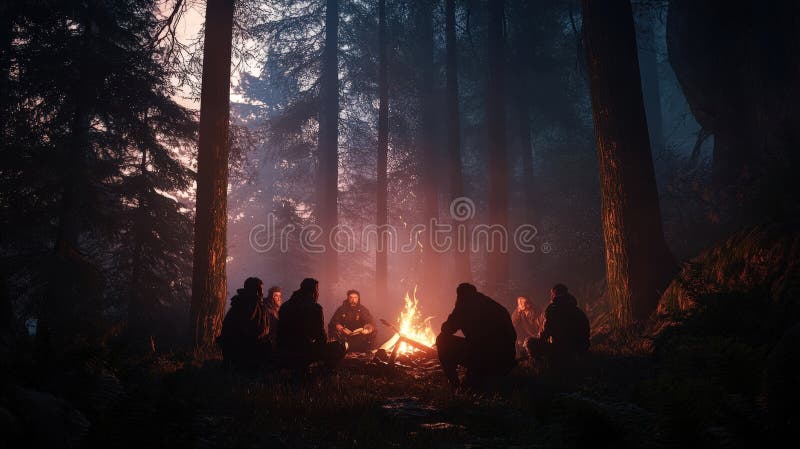
Honoring the Dark: A Homesteader's Guide to Winter Solstice Rituals and Traditions
The Winter Solstice, the darkest day of the year, marks a powerful turning point. As homesteaders, we are deeply connected to the rhythms of nature, and this season offers a unique opportunity for reflection, renewal, and celebration. While the world around us may seem dormant, beneath the snow-covered ground, life is stirring, preparing for the return of the sun. Let's explore how we can honor this special time with rituals and traditions that resonate with the homesteading spirit, fostering a deeper connection to nature and welcoming the light to come.
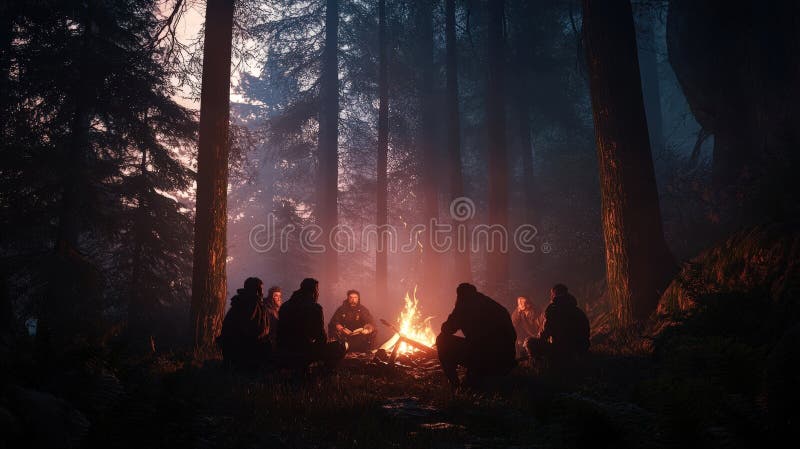
I. Building a Solstice Bonfire: A Beacon of Hope
The bonfire is a powerful symbol of the returning light and warmth we crave during the darkest days. Building a small, safe, and eco-friendly fire on your homestead can be a deeply meaningful ritual, a beacon of hope against the winter chill. This isn't about a raging inferno; it's about a controlled, contained fire that represents the rekindling of life's flame. An easy Winter Solstice bonfire is the perfect way to invite warmth into our homestead and hearts.
Instructions:
- Gather Sustainable Firewood: Look for fallen birch and oak branches on your property. Avoid cutting live trees. Sustainable forestry practices are key to respecting the land.
- Construct a Safe Bonfire Pit: Gather stones from your property and arrange them in a circle approximately 3 feet in diameter. Line the pit with a layer of sand to protect the ground.
- Light the Fire: Use a fire steel and tinder created from dried birch bark and cottonwood fluff. Avoid using accelerants.
- Fire-Starting Ritual: Scatter dried sage, rosemary, and lavender into the flames while reciting an affirmation for the coming year: "May warmth, light, and abundance return to our land and our lives."
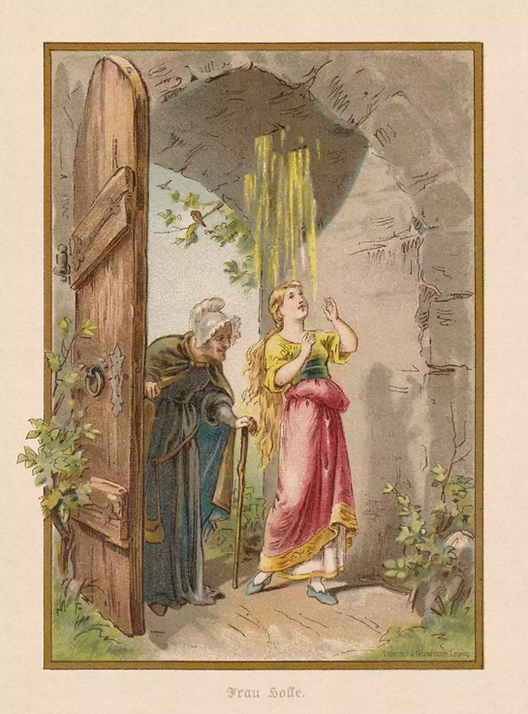
Visual:
Imagine your family and friends gathered around the bonfire, the flames reaching approximately 4 feet high, casting flickering shadows on their faces. Natural seating surrounds the fire: split logs of oak and comfortable tree stumps covered with sheepskins. The aroma of burning wood and herbs fills the crisp winter air, creating a cozy and inviting atmosphere. Small strings of warm white LED fairy lights are strung between nearby trees, adding a touch of magic.
Call to Action:
Share photos of your Solstice bonfires on social media using #HomesteadSolstice and #WinterFire. Always practice fire safety. Learn more about fire safety here.
II. Creating a Crystal Grid for the Solstice: Grounding and Intention
Crystal grids are powerful tools for manifesting intentions and connecting with the earth's energy. During the Winter Solstice, creating a crystal grid can amplify your focus on grounding and setting intentions for the coming year. This ritual promotes a feeling of stability and purpose as we navigate the darker months and anticipate the return of the light.
Instructions:
- Crystal Selection: Use a central smoky quartz point (for grounding), surrounded by six clear quartz points (for amplification), and six citrine tumbled stones (for abundance), arranged in a hexagonal pattern.
- Base: Place the grid on a natural surface like a round slice of a reclaimed oak tree trunk, approximately 12 inches in diameter.
- Charge the Crystals: Charge the crystals under the light of the full moon on the eve of the solstice for enhanced power. Do this by placing them on a windowsill or outside on a natural surface.
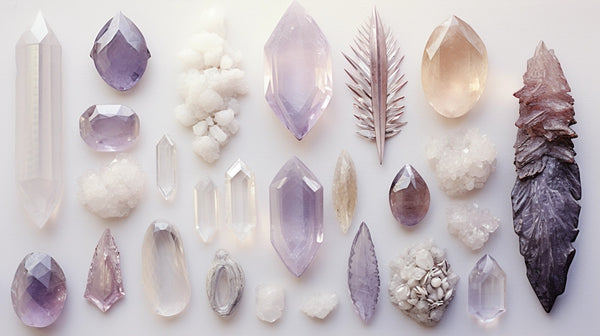
Visual:
Picture the crystal grid as a focal point for meditation and intention-setting, placed indoors on a rustic wooden table. Beeswax candles in small glass holders illuminate the grid, creating a calming atmosphere. Soft instrumental music plays in the background, enhancing the serene environment.
Call to Action:
Share your crystal grid designs and intentions on social media using #SolsticeCrystals and #GridMagic. Learn more about crystal properties here.
III. Preparing a Solstice Feast with Root Vegetables: Nourishment from the Earth
Seasonal eating is a cornerstone of homesteading. During winter, root vegetables are abundant, providing essential nourishment and connecting us to the earth's energy. Preparing a Solstice feast with these humble ingredients is a celebration of the earth's bounty, even amidst the cold and snow. Root vegetable recipes for the Winter Solstice are nourishing and comforting.
Instructions:
- Roasted Root Vegetables: Roast carrots, parsnips, potatoes, and beets tossed with olive oil, rosemary, thyme, and a sprinkle of sea salt.
- Root Vegetable Stew/Soup: Create a hearty stew or soup, emphasizing homemade chicken bone broth for added nutrients and flavor.
- Accompaniments: Serve with homemade sourdough bread and seasonal fruits like apples and pears poached in spiced wine.
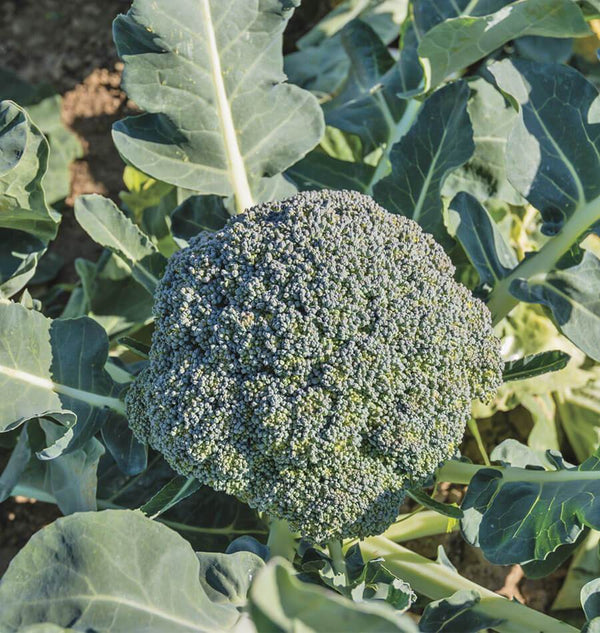
Visual:
Imagine a colorful and abundant spread displayed on a reclaimed wood table covered with a linen tablecloth. The aroma of roasted vegetables fills the air, creating a warm and inviting atmosphere. Rustic ceramic tableware and natural decorations, such as pinecones and evergreen branches, enhance the festive mood. Soft, warm candlelight provides the perfect lighting.
Call to Action:
Share your Solstice feast recipes and photos on social media using #HomesteadFeast and #WinterRoots. Explore seasonal eating guides here.
IV. Storytelling: Frau Holle and the Gift of Winter:
Frau Holle (also known as Mother Hulda) is a captivating figure in German folklore, intimately linked with winter, snow, and the age-old practice of spinning flax. Her tale serves as a potent reminder of nature's cyclical rhythms and emphasizes the virtues of diligence and perseverance, values deeply cherished within the homesteading community.
Story Summary:
The story revolves around two sisters, Anna and Bertha. Anna, the industrious and kind sister, diligently spun flax by the well. One day, she pricked her finger on the spindle, causing her to drop it into the well. Fearing punishment, Anna jumped in after it and found herself in a sunlit meadow. There, she assisted an oven full of bread by taking the loaves out to prevent them from burning and helped an apple tree by shaking its branches so the ripe apples would fall. Eventually, she arrived at Frau Holle’s house and diligently helped with her chores, which included shaking the featherbeds to make it snow on Earth. For her hard work and kindness, Frau Holle rewarded Anna with gold.
Bertha, upon hearing of her sister's good fortune, attempted to replicate Anna’s actions. However, her laziness and unkindness resulted in her being covered in pitch instead of receiving gold.
Frau Holle's shaking of her feather bed, which causes snow to fall, symbolizes the cleansing and renewal that winter brings to the world. This fairy tale’s core values – diligence, kindness, and respect for nature – deeply resonate with the homesteading ethos.
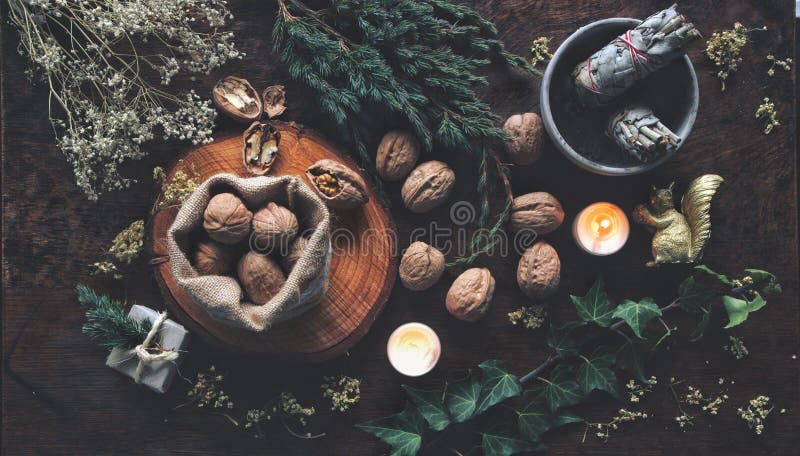
Call to Action:
Share your interpretations of the Frau Holle story and its relevance to modern homesteading using #FrauHolle and #WinterTales. Read the full text of the Frau Holle fairytale here.
V. Nature-Based Yule Divination: Seeking Wisdom from the Land
Yule divination involves using natural elements found on your homestead to gain insight into the coming year and connect with the wisdom of nature. Evergreen boughs (pine, fir, cedar), mistletoe with berries, holly with berries, and winter berries (cranberries, rosehips) each carry symbolic meanings that can help guide your reflections and intentions. This practice is a beautiful way to deepen your connection with the land and understand its messages. Homestead Winter Solstice Divination methods are natural and connect us with the rhythms of the natural world.
Instructions:
- Gather Materials: Collect a selection of evergreen boughs (three different types), mistletoe with at least three berries, holly with at least five berries, and a small handful of winter berries.
- Arrange the Circle: Arrange them in a circle, approximately 18 inches in diameter, on a natural surface such as a woven straw mat.
- Light a Candle: Light a single white beeswax candle in the center of the circle.
- Meditate and Select: Meditate on a specific question or intention for the coming year, such as "What is the most important lesson I will learn this year?". Then, with eyes closed, randomly select one or more of the plants and interpret their symbolism based on their traditional associations:
- Evergreen = endurance and growth
- Mistletoe = love and peace
- Holly = protection and strength
- Winter berries = abundance and resilience
- Record Interpretations: Record your interpretations in a journal.

Visual:
Imagine the divination ritual taking place in a quiet and peaceful setting, such as a sunroom or a sheltered porch, surrounded by the natural beauty of the winter landscape. The light is soft and diffused, creating a sacred atmosphere. A faint scent of pine and beeswax fills the air.
Call to Action:
Share your Yule divination experiences and interpretations on social media using #YuleDivination and #NatureWisdom. Learn more about plant symbolism here.

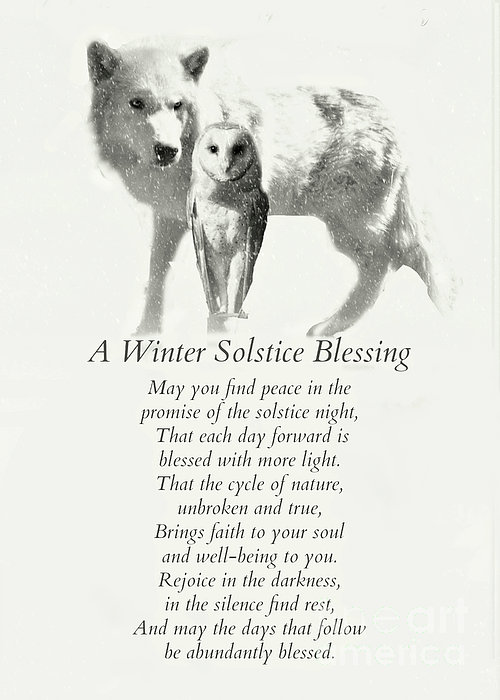

Embracing the darkness and stillness of winter is a vital part of the homesteading cycle. It's a time for reflection, renewal, and a deeper connection with the natural world. Incorporating these Winter Solstice rituals and traditions into your homesteading practices allows you to honor the season's unique energy and welcome the return of the sun with open hearts and renewed spirits. May this Winter Solstice bring you peace, reflection, and a prosperous coming year.